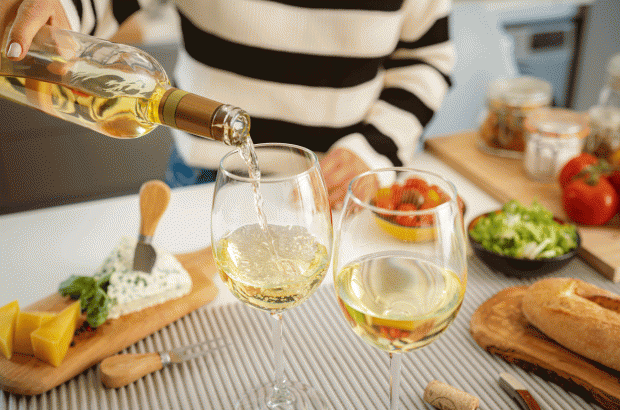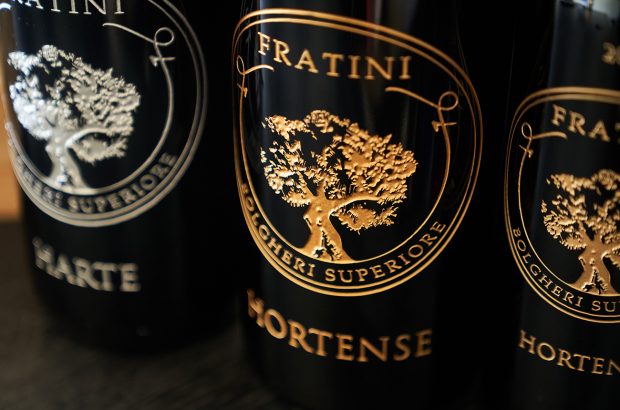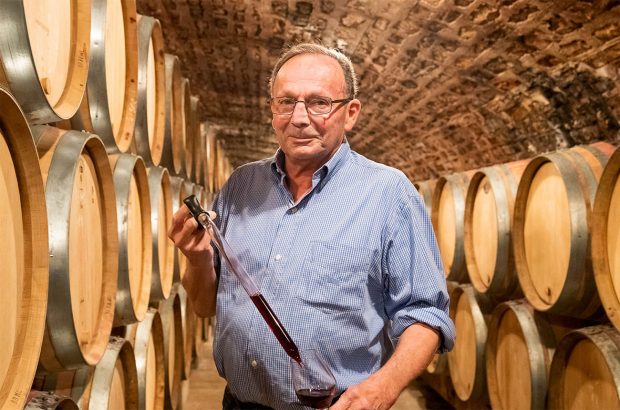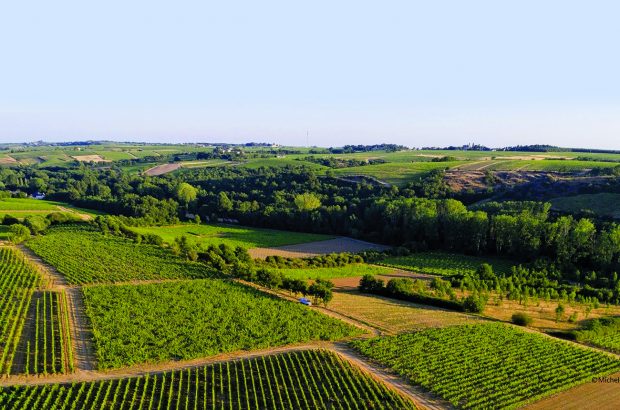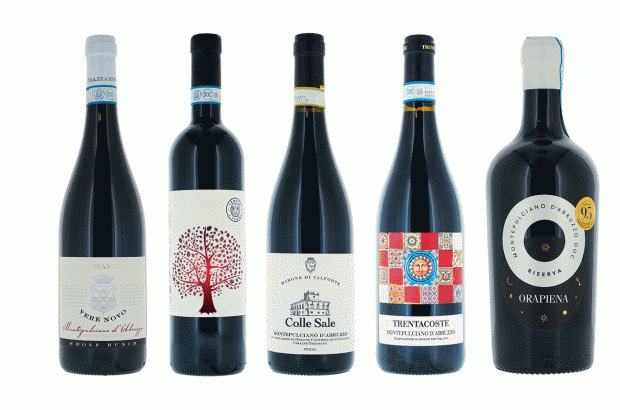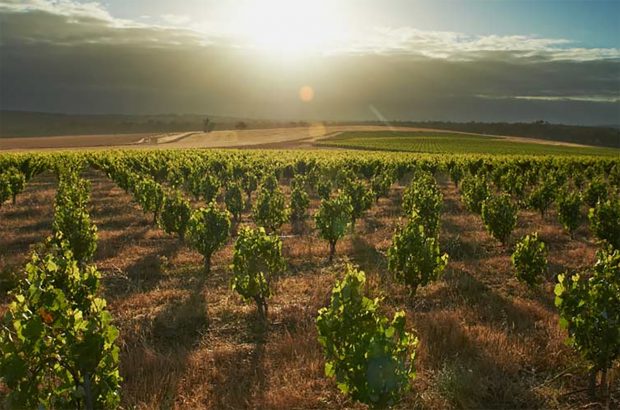All wine regions tend to be stereotyped to a certain degree – and that isn’t necessarily a bad thing. If a region has managed to get its name associated with, say, aromatic whites or sparkling wines or powerful spicy reds, that can give it a head start at the local supermarket or restaurant.
As customers, we feel as though we know what we’re getting from Rías Baixas, or Champagne or the Barossa Valley, almost to the point where the producer’s name becomes secondary, a stamp of quality rather than style.
Rioja has always been one of the most tightly defined wine regions – a place with a strong vinous identity to which people are drawn because they feel as if they know what to expect. Say the word Rioja and most of us will conjure up a palate-picture of a red wine that can be summed up with a familiar list of descriptors: mellow, soft, coconut, vanilla, savoury, mature. We can also link those words to a particular set of winemaking inclinations: American oak barrels, long pre-release ageing, the Tempranillo grape variety.
Stereotype, caricature, brand identity – call it what you will, but it has served Rioja well over the years. The Rioja name regularly ranks among the top handful of the world’s most recognised wine regions in tests of consumer knowledge, whether it’s an extensive survey by the wine industry’s leading market research firm or a more informal measure such as Rioja’s name being deemed famous enough by confectioners to appear on packets of wine gums.
But there is a very significant downside to the strong identification between Rioja and a single style of wine or school of winemaking: it fails properly to represent what has been going on in the region over the past 30 years. It’s a simplistic view that is out of touch with a modern wine culture brimming with stylistic variety, where winemakers are experimental in the cellar and vineyard, where the supporting cast of grape varieties is increasingly being given juicy lead roles, and where white, sparkling and rosé wines are now taken every bit as seriously as their red counterparts.
In this article, I’ve chosen six wines that represent the enormous diversity of modern Rioja – wines which show that, while the traditional (or classical) style with which the region made its name is still widely practised (and, arguably, has never been better), it now takes its place alongside many other exciting and different Rioja styles.
R López de Heredia, Viña Tondonia Reserva 2008
Gentle evolution of the traditional style
As a visual representation of modern Rioja, there’s something almost too perfect about R López de Heredia’s headquarters in Rioja’s spiritual home in Haro’s Barrio de la Estación railway station district. The photogenic bird tower (‘Txori Toki’ in Basque), which has featured on the company’s bottles since 1886, stands atop a vast network of almost 1.94ha of buildings, including almost 0.4ha of underground cellars, extending up to 15m below ground.
Juxtaposed against this largely 19th-century construction, like the glass pyramid in the Louvre, is a slice of pure modernity: the company commissioned the late Zaha Hadid to rebuild the shop and tasting room as part of its 125th anniversary celebrations back in 2002 – a characteristically swooping, fluid creation in steel and glass.
Modernity smashing into tradition: that was how winemaking differences in Rioja were characterised in the 1990s and 2000s, with López de Heredia’s wines often presented as a bulwark and bastion of the old ways, standing up to the modernising bodegas with their toasty new French oak, riper, more deeply extracted fruit and shorter ageing.
Today, such views of winemaking are considered passé in a region where the balance between new and old is more of a continuum, with most bodegas taking elements from both ends. As the López de Heredia family puts it, ‘By “tradition”, we do not mean immobility or being opposed to change; rather, a dynamic and aesthetic concept in maintaining eternal principles and criteria.’
Still, there’s no doubt that López de Heredia stands at the more traditional end of that spectrum, alongside some (or all) of the portfolios of La Rioja Alta, Muga, CVNE and Marqués de Murrieta, with the winemaking only incrementally changed in the years since its foundation.
In the case of the red Viña Tondonia Reserva, that means a blend (75% Tempranillo, 15% Garnacha and 10% Graciano and Mazuelo) of fruit grown in the 100ha Tondonia vineyard on the right bank of the Ebro river in Rioja Alta. It was established by Don Rafael López de Heredia y Landeta in 1913 and is one of four vineyards owned by the family. The fruit is destemmed and fermented in large oak vats (up to 240hl), then aged for six years in barriques made from Appalachian oak in the company’s own cooperage, with careful rackings taking place roughly twice a year. Like all the López de Heredia wines, it is released only when the family thinks it’s ready, which means bottle ageing for far longer than the legal requirement for reserva or, indeed, for gran reserva wines.
There’s a sense of continuity and history when you drink a wine from a producer that made its first reserva wine in 1890, but the pristine fruit that underwrites all that time in the cellar makes the López de Heredia wines among the best in modern-day Rioja.

Muga vineyards
Muga, Flor de Muga rosado 2020
A new wave of elegant rosé
As well as their work with winemaking vessels and their use of high-altitude vines, the otherwise very different Lalomba and Sierra de Toloño projects also share another distinction. They both produce excellent – albeit very different – examples of a style taken increasingly seriously in Rioja: rosado.
Of course, pink wines have always been made in Rioja. But they traditionally came in a robust, dark, more full-bodied and – in many cases – oxidative (oak- aged) style that had largely fallen from favour (and dropped significantly in production) by the time the global rosé boom kicked off in the 2000s. More recently, however – notably in the three years since the Rioja consejo regulador changed its regulations to allow wines with a paler pigment, in order to suit the requirements of consumers weaned on the pastels of Provence – an elegant new chapter in Rioja’s rosé history has begun.
Rosé still only represents about 14 million litres of Rioja’s total annual production of 296m litres (in 2020): red, unsurprisingly, has the lion’s share at 257m litres; white has 25m litres. Much of those 14m litres is rather ordinary; but the best rosé producers have carved out a distinct stylistic niche, one based on freshness (often from high-altitude vines), vibrant, almost-mineral acidity and a hazy softness of red fruit.
Bodegas Muga, whose estate rosado has been a tapas-restaurant staple worldwide for years, helped set the tone for the upmarket shift in Rioja rosé with its launch of Flor de Muga in 2017 (the 2016 vintage). This was rosé taken as seriously as a fine red or white, produced from 12 plots of Garnacha aged between 70 and 90 years old, planted at 600m-750m in Alto Najerilla in Rioja Alta. Using only free-run juice after a brief maceration on skins, it is aged on lees in stainless steel for four months with regular batonnage.

Contino’s tasting room at its Laserna winery near Logroño
Contino, Graciano 2016
The rise of Rioja’s ‘other’ red grape varieties
That Rioja is synonymous with Tempranillo in many wine drinkers’ minds is only to be expected. Almost 80% (or 35,360ha, according to the latest figures from the Rioja consejo) of the region’s total vineyard – and 86% of its red production – is taken up by the variety. For the most part, the region’s other red grape varieties are relegated to bit-part players, with 5% here, or 10% there in various Tempranillo-led blends.
That those ‘other’ red varieties are capable of rather more than providing colour and dark fruit (Graciano) or fleshy mid-palate succulence (Garnacha) or tannic depth and structure (Mazuelo) has, however, become increasingly apparent as more winemakers give each variety a starring, solo role.
The most successful so far, in terms of both the quality of the wines and their reception by wine drinkers, has been Rioja’s second most widely planted red variety, Garnacha – as Amaya Cervera explains. Mazuelo (number three with 855ha) has also had its moments, notably in the powerful but superbly expressive version produced in good vintages by the late Miguel Merino.
But it’s Graciano, currently the region’s fourth most-planted red variety (with 841ha) – and a grape rarely found outside Rioja – that has the most potential to surprise. It’s a variety that requires care and, ideally, limestone soils, night-time coolness and a long growing season if it is to reach full ripeness and prevent its attributes – vivid, inky colour, ample tannin and dark curranty fruit – from tipping over into something uncomfortably intense and overblown.
When that sweet spot of ripeness is achieved, as it generally is in the bottling made by Contino from the estate’s 3.7ha San Gregorio Grande vineyard (as well as in wines from Montecillo and Dominio de Queirón, among others), then that dark, almost crunchy quality adapts beautifully to the kind of careful oak ageing at which Rioja’s winemakers are so adept. For the Contino, that means an alcoholic fermentation in 100hl oak vats followed by 16 months in new oak barrels (72% French, 28% American), before a six-month stay in concrete tanks.

Telmo Rodriguez
Telmo Rodríguez, Bodega Lanzaga, Las Beatas 2018
Rioja’s terroir turn
For much of its history, Rioja production has been closer to the classic Champagne model, where houses – or bodegas – make and market wines produced from grapes bought from growers.
Arguably the most important single development in Rioja over the past couple of decades, however, has been Rioja’s embrace of a more Burgundian approach, in which grower-producers make wines from their own vineyards.
After years of wrangling, this development got its official stamp of approval back in 2017, with the Rioja consejo introducing a second three- tiered quality pyramid for ‘terroir’ wines to go alongside the one based on ageing times: Viñedo Singular (unique vineyard), Vino de Municipio (the equivalent of a Burgundy village wine) and Vino de Zona (from one of Rioja’s three sub-zones: Rioja Alta, Rioja Alavesa and Rioja Oriental).
Some of the biggest names in Rioja (Contino and López de Heredia among them) have long worked with single-vineyard wines. But the emergence of the official categories acknowledges the existence of an energetic, largely counter-cultural current in Rioja wine that has added enormously to its diversity of expression.
Among the leaders of this new terroiriste Rioja is Telmo Rodríguez. One of Spain’s most celebrated winemakers, Rodríguez made his name with a peripatetic career that took him to vineyards all over Spain. More recently, he’s taken the reins at his family estate, Remelluri, alongside his sister, Amaia. His own project, Lanzaga, focuses on making wines in which a sense of place is a priority.
Las Beatas is one of two single-vineyard wines (pictured at the top) from a restored terraced vineyard of just 1.9ha at around 600m in Labastida. A field blend of red (and some white) varieties including Tempranillo, Graciano, Garnacha Blanca and Garnacha, it’s aged for 15 months in 1,200-litre vats to produce a wine that, to paraphrase Rodríguez, is more about where it’s from than how it was made.

Sandra Bravo, Sierra de Toloño
Sierra de Toloño, Raposo 2018
New ageing techniques
Rioja’s reputation was built with oak. Whether the oak in question was the ‘traditionalist’ American variety or the more ‘modernist’ French, and whether the wine was a mass-market crianza or gracefully aged gran reserva, a mastery of the flavours and textures of wood-ageing was the region’s calling card.
In recent years, however – in common with trends in the wine world – many Rioja producers have been looking to produce wines with no discernible oak flavour, experimenting with neutral ageing vessels from concrete to clay amphorae and larger, older oak casks.
Curiously, you could argue that the choice of winemaking vessel is the least interesting thing about the wines of one of the standout producers in the non-oaky school: Sierra de Toloño.
The project of young winemaker Sandra Bravo, Sierra de Toloño is based around a set of tiny plots of old vineyards at altitudes of up to 700m surrounding her small winery in Villabuena de Alava in Rioja Alavesa. Bravo’s winemaking choices are very much in service to the exquisite, organically farmed fruit she harvests from those plots.
Still, those choices have a significant say in the character of the finished wines. Her heart-stoppingly beautiful, almost delicate, fresh La Dula Garnacha de Altura uses fruit from her highest vineyard, with vines that have an average age of 70 years. Bravo conducts the fermentation in large, old neutral oak foudres, before transferring the wine to amphorae. Her Raposo, meanwhile, shows what a neutral ageing vessel can do with a more conventional blend of Tempranillo and Graciano, using fruit from a 100-year-old and a 60-year-old vineyard, which is fermented (with wild yeast) and aged in foudres.
Vessel experimentalism isn’t confined to smaller producers. For its impressive, meticulously planned Lalomba single-vineyard project, Ramón Bilbao carried out detailed research on the effects of different types of oak on red wines from two high-altitude plots, Finca Valhonta and Finca Ladero, with the size, toasting, age and origin of oak barrels (French and Hungarian) ultimately tailored to the tannin levels in each cuvée.
Just as interesting as the oak research is what happens either side of the wines’ respective 14 and 16 months in barrel: the cuvées are both fermented and given their final softening ageing periods (eight and 22 months respectively) in concrete vats, a material that Bilbao winemakers Rosana Lisa Oliva and Alberto Saldón admire for its slower oxygenating effects (roughly half as porous as barrels).

Abel Mendoza and his wife, Maite Fernández. Credit: Lorena Martínez Acha
Abel Mendoza, Malvasia 2019
White & sparkling Rioja: a region in microcosm
No article on Rioja diversity would be complete without some mention of the region’s white wines. It’s a part of the market that accounts for a mere 9% of total production, but within that small percentage you can view in microcosm many of the developments that have transformed Rioja as a whole.
This is a sector with space for the great, almost absurdly long-lived classics of the oak-aged old school: the inimitable, multi-faceted, oxidative greatness of Viña Tondonia Gran Reserva Blanco or Marqués de Murrieta Castillo Ygay.
But it also features a variety of superb but more conventionally oaked white wines, such as the almost Burgundian likes of Palacios Remondo Plácet, a 100% Viura aged for 10 months in oak foudres, or Finca Allende Blanco, which adds a little Malvasia to the French barrel-fermented yet luminous mix. There’s also a wealth of perfectly drinkable, if unexceptional unoaked whites, of which CVNE’s Monopole Unoaked Blanco is a fully fruited cut-above.
White Rioja also extends to its small but, at times, surprisingly good quality sparkling wines, with the first few bottles from the official new regional sparkling DO emerging on the market in 2020, although the best of the Rioja fizz breed (Muga’s Conde de Haro) has chosen to stay in the Cava DO for now.
An upcoming article by Sarah Jane Evans MW covers white Rioja in much greater detail than I have space for here. But if I were to pick one white Rioja to represent the theme of diversity, and its contemporary combination of modern winemaking knowhow, tradition and a new-found obsession with terroir, it would be Abel Mendoza’s delightful take on Malvasia. Produced by a winemaker with an encyclopaedic knowledge of the vineyards of Rioja Alavesa, it is drawn from dozens of tiny plots, and expresses a local variety with the most subtle shading of barrel fermentation and five months’ maturation in new French oak.





